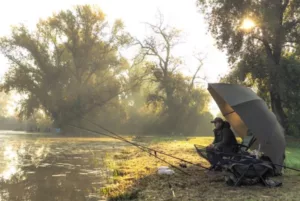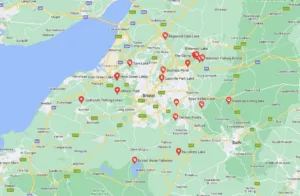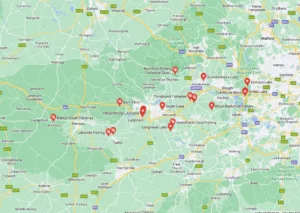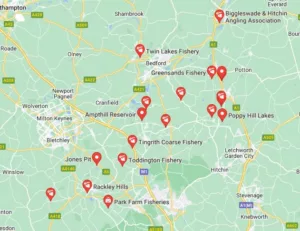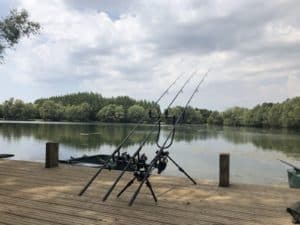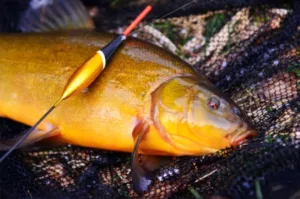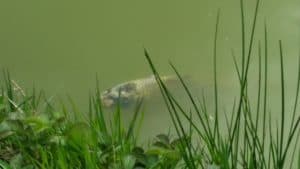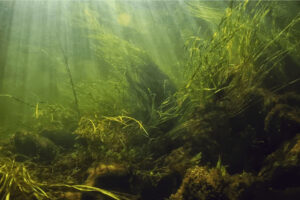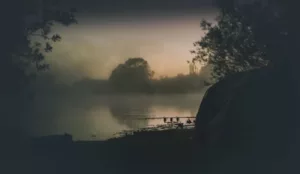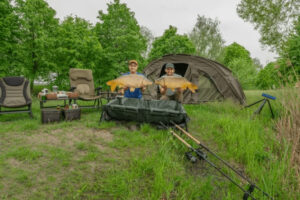Watercraft is the ability to analyze a lake and be able to determine where the carp are likely to be, according to aspects such as the weather, feeding patterns, wind direction, and pressure.
Watercraft is a skill learned over many years and developed only from spending time on the bank.
Many anglers understand the need to learn watercraft, but very few truly master the skill. Many anglers blank on fishing sessions simply because they ignore sign’s of feeding carp and fail to follow the fish around the lake. This is normally the result of laziness.
You will find many videos on Youtube and lots of books on Amazon that cover the different elements of watercraft. It can take a long time to be able to apply the techniques of watercraft as it can be quite confusing to new anglers.
When it comes to applying watercraft, what you find works on one lake, doesn’t necessarily work on another lake, they are all different in terms of feeding habits, holding spots and how the weather affects the lake. But one thing that is consistent with EVERY lake, is that you need to find the fish before you can catch them. If they aren’t in front of your swim, it’s unlikely that you will catch them.
Location
Location is one of the most important aspects when it comes to fishing. If you are in the wrong swim because the fish aren’t in front of you, then the chances of catching them are very low.
The trick to finding the fish is using the skills of watercraft to look for feeding fish, or fish holding up in a particular part of the lake. This is what anglers describe as watercraft.
Some anglers have the ability to learn watercraft very quickly, yet others never manage to quite grasp the basics. But, by following the tips below, you will be set on the right path to catching more fish.
Locating Feeding Carp
It’s well documented that carp cannot help but give their location away eventually, either by way of feeding or cleaning out their gills.
Bubblers
When looking around the lake, you will see bubbles breaking the surface of the water. There are ordinarily two main reasons for these bubbles. One reason being the natural gases releasing from the lake bed. The other main reason is fish feeding and releasing air and gases through their gills.
You can normally tell the difference between the two. Lake gases will typically be released in the same spot, whereas, fish feeding will lead a trail and not be in the same spot. The lake gases will also be a constant stream of bubbles that are normally the same size, but carp bubblers will be of different sizes, not a constant stream, and there will be a trail of bubbles, rather than in the same spot.
Flanking
Flanking will be another reason for bubbles, this happens when carp are cleaning themselves off. They do this by rubbing the sides of their bodies against the lake bed, this could then be followed by them jumping out of the water, called “showing”. Flanking will result in a much larger sheet of bubbles on the lake surface, almost like an eruption, which is commonly known as “sheeting up”.
Head & Shoulders or Showing
Fish feed by sifting through the lakebed looking for things to eat. By doing this, they will pick up silt whilst sifting through for food. When the silt gets clogged in their gills, they will need to clear it out. This is when you will see them “topping” out of the water, showing their location in the lake. The true reason as to why they leap out of the water hasn’t been scientifically proven, but this is one logical reason.
Another reason being, they are just being playful. Another further reason could be that they are cleaning off the parasites from their body and from their gills.
Some anglers will cast to fish crashing as it can be a sign of feeding. So, having a “roaming rod” is useful when there are lots of showing fish.
A roaming rod is a rod with a rig that can be cast long distances, such as a chod rig or a helicopter rig. A rod with a zig rig wouldn’t be a good roaming rod as zig rigs are very easily tangled when they are cast out into the lake.
Many anglers have caught their PB’s from using this tactic and I believe it is worth casting to showing fish with at least one roaming rod.
Cloudy and Muddy Waters
With muddy lake beds and silty bottoms, carp will disturb the lake bed when feeding. When this happens, it’s easily noticeable from the bank. This only really happens when fish are feeding, so if you can slip a rig into muddy waters, you might manage a really quick bite. This is one of the tactics stalking anglers use to catch fish. Although, you must remember to be very quiet when approaching the lake as to not scare off the fish.
The best purchase I have made when it comes to watercraft and stalking, are polarized sunglasses.
The cheap glasses don’t work very well at all, and when I purchased the set I use now, I noticed a huge difference in quality.
I wear the liteforce Ray-Ban sunglasses which are fantastic, and stylish so I can wear them when I am not at the lake too without looking silly. They are quite pricey, but worth every penny in my opinion. You can find them here on Amazon.
I had a cheap pair that I bought for $50, and they were really low quality compared to the liteforce Ray-Ban’s.
A peaked hat also really helps when looking around for signs of carp as it keeps the glare down.
Natural Lake Food
You should always spend at least an hour or so looking for carp when you first arrive at a lake. You should never pick a swim until you have had a walk around trying to find the fish. But if you do walk around the lake and there are no signs of fish, then you need to find the natural food larders such as overhanging trees.
Areas like lilypads, weed beds, and islands are also areas that carp are normally found as these areas will hold snails crustaceans and other natural foods that the carp feed on. Intercepting carp in these areas are the next best thing you can do if there are no signs of showing carp.
If there aren’t islands, weed beds or lily pads on the lake you are fishing, you are going to need to find feeding areas on the lake bed such as gravel bars or troughs.
Using a Marker float, FishSpy or a Deeper Sonar as mentioned in this post will ensure you find carp quickly.
I also go into detail about the FishSpy in my FishSpy article here. It’s one of my favorite tools in my fishing kit.
Finding gravel bars, snags and dips in the lakebed could be the key you need to open up the secrets to catching the best fish in the lake.
So, if you can’t see the fish, start looking deeper.
Diving Birds
Always keep an eye out for diving birds, both when you are looking for carp, and while you are fishing.
Birds dive down to the lake bed to feed. This can become extremely annoying when they are diving down on your own baited spots.
If you seeing them diving down, there is a chance they are diving down on someone else’s baited spot. If the angler isn’t still fishing that spot, you could catch a quick bite if the fish are feeding there and you can accurately place a rig where the fish are feeding.
If you are able to cast a FishSpy on the spot, it may reveal a food larder.
Sometimes you will see the birds popping back up quickly and squeaking, this may be the signs of carp trying to scare the birds away from the bait. So getting a rig on the spot is worthwhile.
Lessons Learned
Don’t just show up and pick a swim.
Use these tips to do a bit of investigation work, walk around the lake looking for signs of fish before settling down for the session.
Many anglers blank from this type of laziness and it is a complete waste.
You will never see the top anglers just turn up and pick a swim. They will either have background knowledge of the lake and where the fish are holding up, or they will be constantly looking around for signs of fish and hopefully feeding fish.
If it isn’t obvious where they are, look around the margins and lilypads to see if there is any movement.
Don’t forget to also ask other anglers if they have seen any fish moving around while they have been fishing, as that may give you a quick head start.
This article briefly touches on a very small portion of watercraft. Weather also plays a huge part in watercraft as well as angling pressures. But we will touch on this in another article as it is a more advanced version of watercraft.
I have made a lot of mistakes during my fishing sessions and don’t want you to make the same mistakes. I’ve learned the hard way over 20 years of fishing most weekends, testing, tweaking, and testing again and now want to help you excel with your carp fishing.
If you need any help, you can reach me at Fishing Again’s Facebook page
Last Updated on February 2, 2024 by Shane


